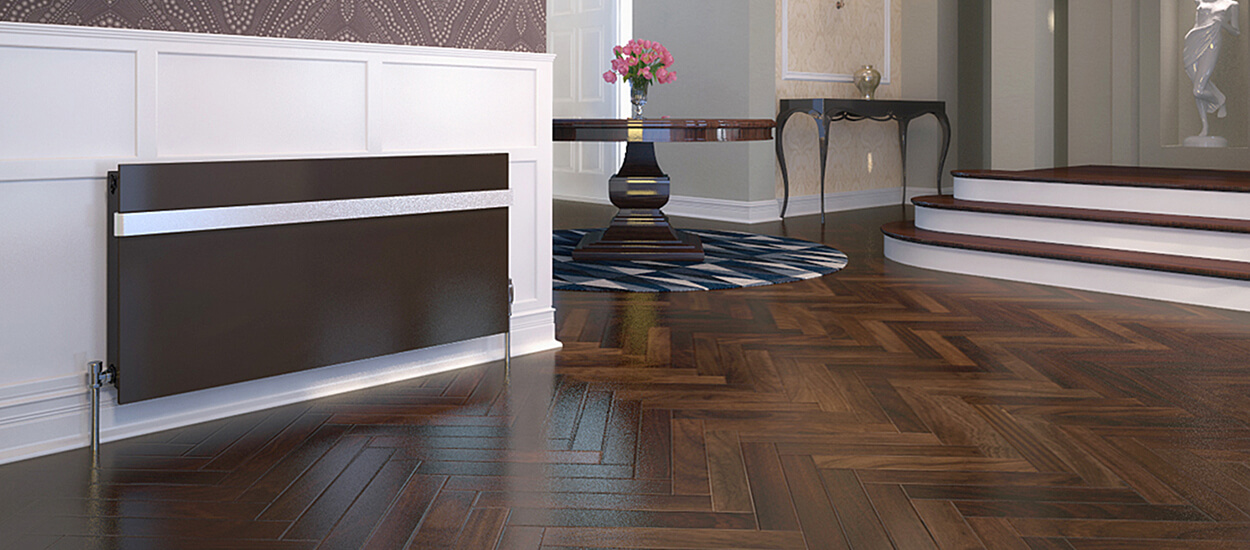Once installed, Radiators often fall into the background when it comes to care and attention as many will work unaided and continue to do so for decades. This may mean that when it comes to the maintenance of your radiators you have no idea where to start. With a task like balancing your radiators, you could be left in the dark on how to do it safely and what to look for to know that it needs some work.
As a start, if you’ve noticed cold spots in your house or you suspect your radiators aren’t heating up evenly, it may be time to consider balancing your radiator system. Read the steps below to find out how to balance radiators in your home to ensure even heating.
What Does Balancing Radiators Mean?
Hot water reaches some radiators more quickly than others as it may have less pipework to travel through. Generally, those closer to the boiler will heat up quicker than others and this means you need to balance your radiators. Balancing radiators is the adjusting of the radiator valves to ensure all your radiators heat up at the same speed. If your radiators are unbalanced, they won’t heat up at the same speed as each other which means certain rooms in your home will be colder than others.
Why Is Balancing Radiators Important?
Balancing your radiators no matter if you have vertical radiators, heated towel racks or even column radiators ensures that there is an even flow of hot water distributed to each radiator and that the radiators heat up at the same speed. The key cause of this issue is the distance of a radiator from the boiler since all the radiators are at a different distance from it. This distance causes an unequal heating distribution. How often you carry out balancing your radiators will depend on your radiator and the quality of your central heating, so be sure to carry out regular checks.
Balancing Radiators Vs Bleeding Radiators
If you find that your radiators have cold spots, this could mean there is trapped air in the system. Bleeding is letting out the air that is trapped inside a radiator which can improve the efficiency of your heating system. Balancing radiators is the process of adjusting your radiator so that they all heat up at the same speed.
How to Balance Radiators
When balancing a radiator system, you will need:
- Radiator bleed key
- Lockshield valve key
- Screwdriver
- Digital thermometer or a multimeter with a thermometer
- Adjustable spanner
1. Make sure you switch off your heating
When balancing a radiator system, all of the radiators in your house must be completely cold, so turn off your home heating and allow enough time for every radiator to cool down. It also helps if you have recently bled them as the readings will be more accurate.
2. Open All Your Radiator Valves
Next, you’ll need to familiarise yourself with the valves on your radiators and open them up by turning them anti-clockwise. You can usually do this by hand if they are thermostatic valves, however lockshield valves will have a plastic cover which will need to be removed before you can open them. You can then use your adjustable spanner or lockshield valve key to open it by turning it anti-clockwise.
3. Make a Note of The Speed Each Radiator Heats Up
Now that all your valves or open, it’s time to turn your central heating back on and make a note of the speed that each radiator heats up. The first will usually be the radiator that is closest to the boiler. It may help to enlist the help of some friends, family members or your kids to help you keep an eye on each radiator throughout your house and let you know when they get warm. Then turn the heating back off and wait for all the radiators to cool down. Some people prefer to leave this off overnight as it may take a while.
4. Turn Your Heating Back on and Adjust The Fastest Radiator
Now that they’re completely cool, turn the heating back on and, starting with the first radiator on your list, turn the lockshield valve clockwise until it is closed and then open it up by a quarter of a turn. Once it has started to heat up, you’ll need to take some measurements with your digital thermometer or multimeter with thermometer.
First, measure the temperature of the pipework that is leading to one of the valves. Next, take a temperature reading at the pipework leading to the other valve on the opposite side of the radiator, usually where the TVR is, and make a note of both of these readings. You’ll now need to turn the lockshield valve very gradually until the difference between the readings of the two pipes is 12°c exactly. It may take a few minutes for the change to happen. When balancing radiators, it’s important to note that it takes time, and you’ll need to wait for the temperature of the radiator to change every time you adjust the lockshield valve before you can get an accurate measurement.
5. Repeat for All Other Radiators
Now that your first radiator has been balanced and is at the exact difference of 12°c, it’s time to continue balancing radiators in the rest of your house. Do this in order that they took to heat up. You should note when balancing radiators that the amount you need to open the lockshield valve corresponds to the distance your radiator is away from your boiler. For example, when it comes to the slowest radiator in your home, you may need the lockshield valve to be opened completely.
Now that you’ve followed the steps above, you can ensure your radiators are now balanced and the dispersal of hot water from your boiler is reaching your furthest radiator as evenly as the closest.

